Trees can be a vital part of your home’s landscaping. They provide shade in the summer, and their roots help keep your soil from washing out with rainfall. They present many challenges you may not be used to, though, and it can leave you wondering how to landscape around trees.
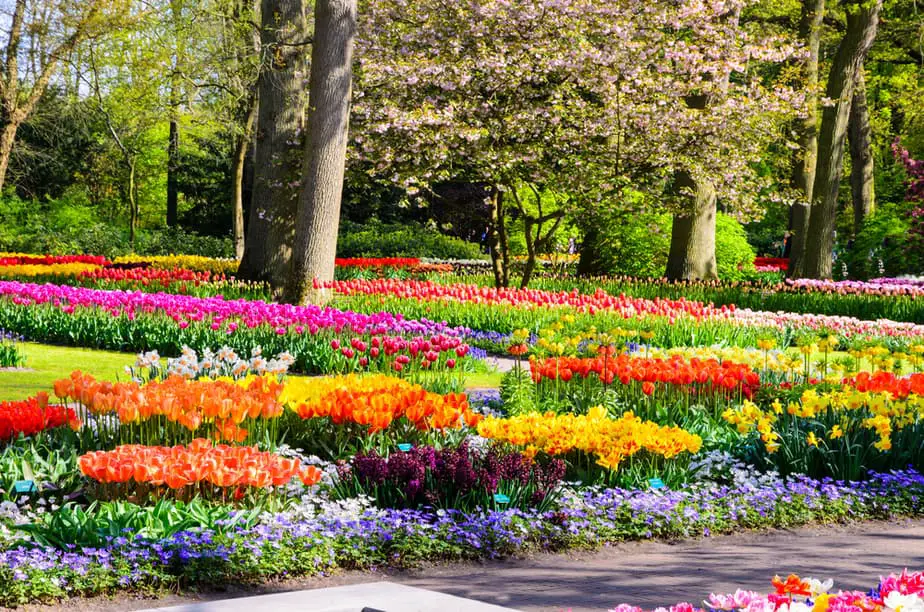
With a little preparation and planning though, you can have a lovely addition to your yard that will look great and be a nice place to relax or play.
Table of Contents
Landscaping Precautions
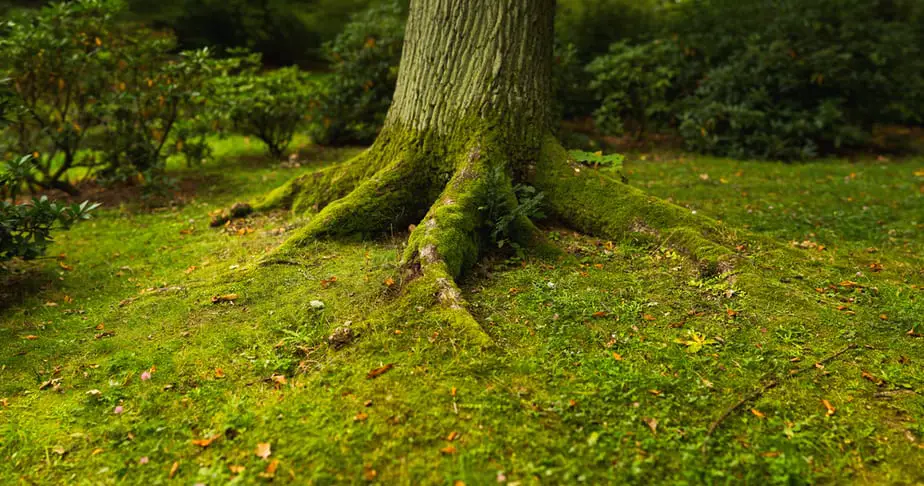
Many trees have shallow roots that rest just below the soil. When landscaping around trees, take special care not to disturb their roots or break the bark around the base of the tree when planting or mulching nearby.
The tree’s bark helps keep fungus, bacteria, and insects out. Similar to how a cut on a human’s skin can become infected, a wound to the bark can mean trouble down the line. Learning how to landscape around trees means learning how to keep your trees healthy and injury-free.
Mulch Rings and Beds
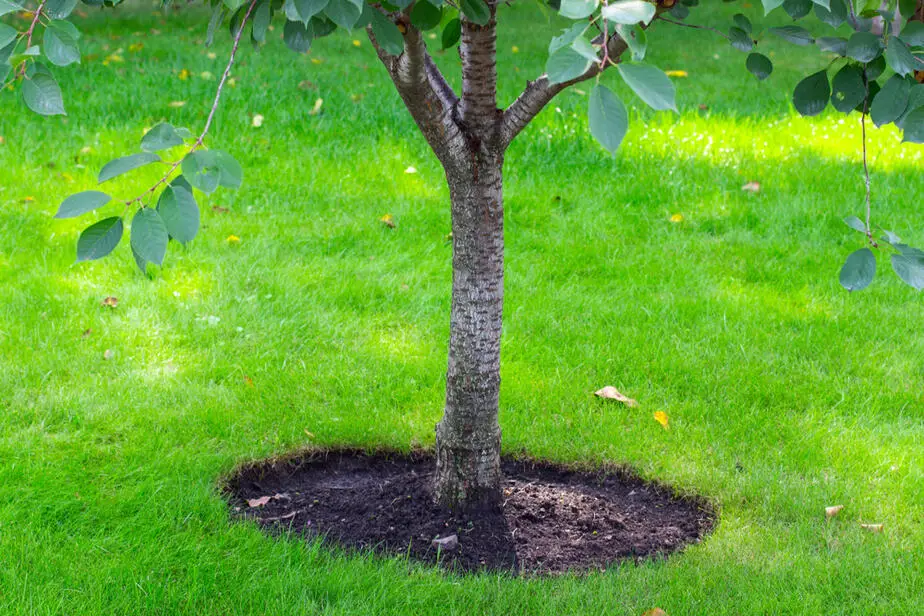
Establishing a mulch bed around your trees can be a very attractive landscaping option. Mulch has other benefits aside from just looking nice, though. Two or three inches of mulch can keep the ground moist and allow you to water less frequently. However, it’s important to keep the mulch from touching the tree trunk for exactly that same reason.
If the mulch is resting directly against the trunk of the tree, it can cause infection and decay over time. A good rule of thumb is to keep the mulch six inches away from the trunk of young trees and a foot away from the trunks of older trees. Ideally, you’ll want the root flare, where the roots meet the trunk above ground, to be uncovered.
Hardscaping Around Trees
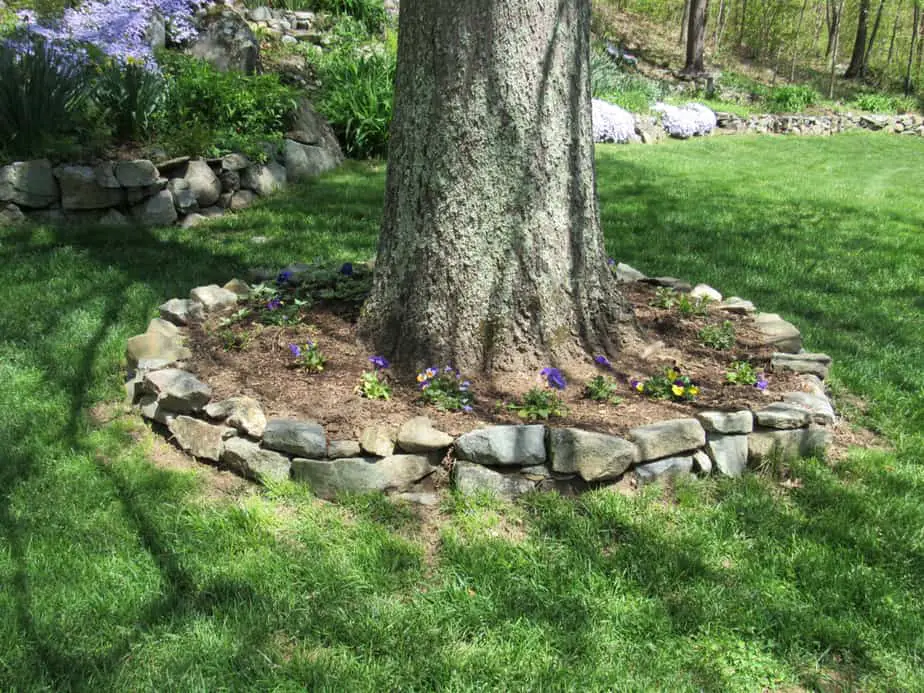
Rocks and bricks can be an excellent way to add color and texture to your landscaping while saving on water. Use them to form a border around the edge of the bed to keep your mulch from washing out into the yard. A well-placed rock can be a lovely accent piece, as well, and it may give the critters that keep your soil nutritious a place to live.
Plants for Under-Tree Gardens
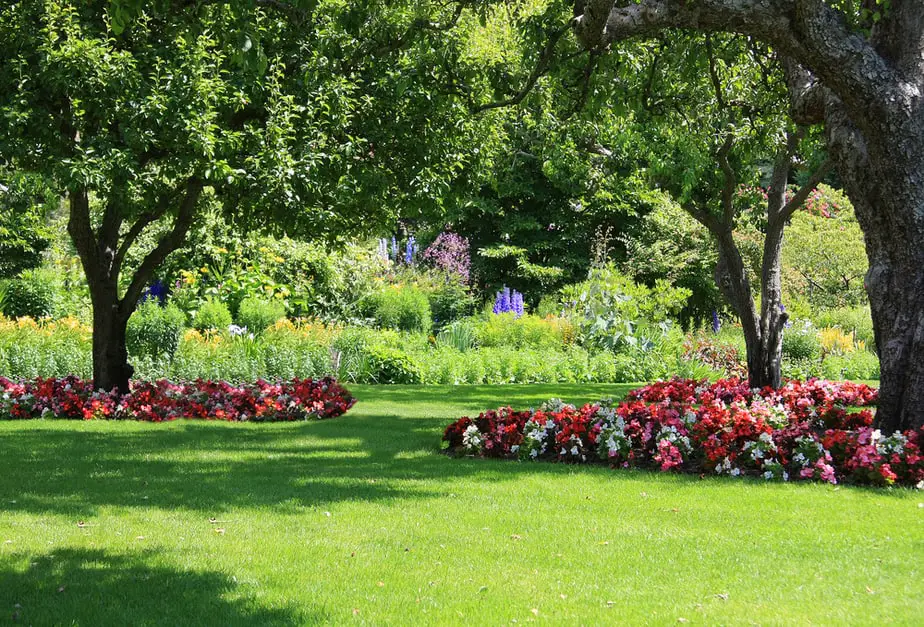
Selecting the right plants for landscaping around a tree is very important. There are many species that are adapted to living in the shade the tree provides. For example, Hostas are very popular perennials that thrive in the shade. Full-shade plants can be planted closer to the trunk of the tree where the least amount of light gets to the ground. Plants that require more sunlight should be placed closer to the edge of the tree’s reach.
Another thing to take into consideration is the amount of water your future plants may need. Deciduous trees require a lot of water, and they allow more water to reach the ground through their limbs. During normal rainfall, you’ll most likely not have to water any plants under a deciduous tree often.
Evergreens don’t need as much water, but their branches don’t allow as much water to reach the ground beneath them. Their roots are also a little closer to the surface of the soil than the roots of most deciduous trees are. This means that evergreens will drink up a lot of the water that smaller plants would normally use. If you plan on planting a garden under evergreens, you’ll want to have plants that can tolerate a dry, shady environment but can also tolerate a minimal amount of water, as well.
A Shady Place
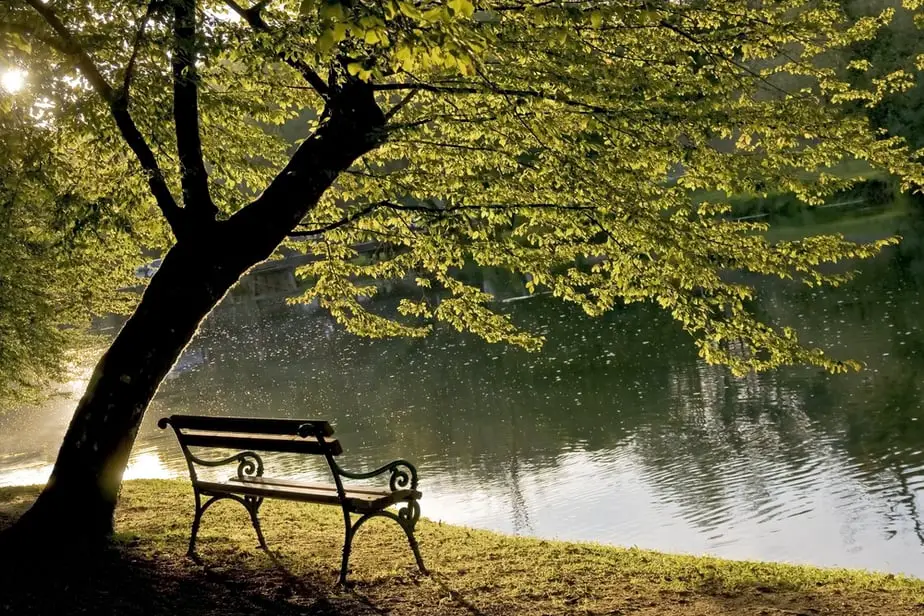
Learning how to landscape around trees means making a space for yourself to enjoy, as well. Placing a bench, hammock, or a picnic table in the shade will give you a nice, shaded place to relax or enjoy a meal in the summer. Stepping stones can be placed throughout your garden so you or your guests can take a closer look at your plants, and decorative garden statues are an excellent way to give your landscaping a personalized touch.
Lighting Up Your Trees
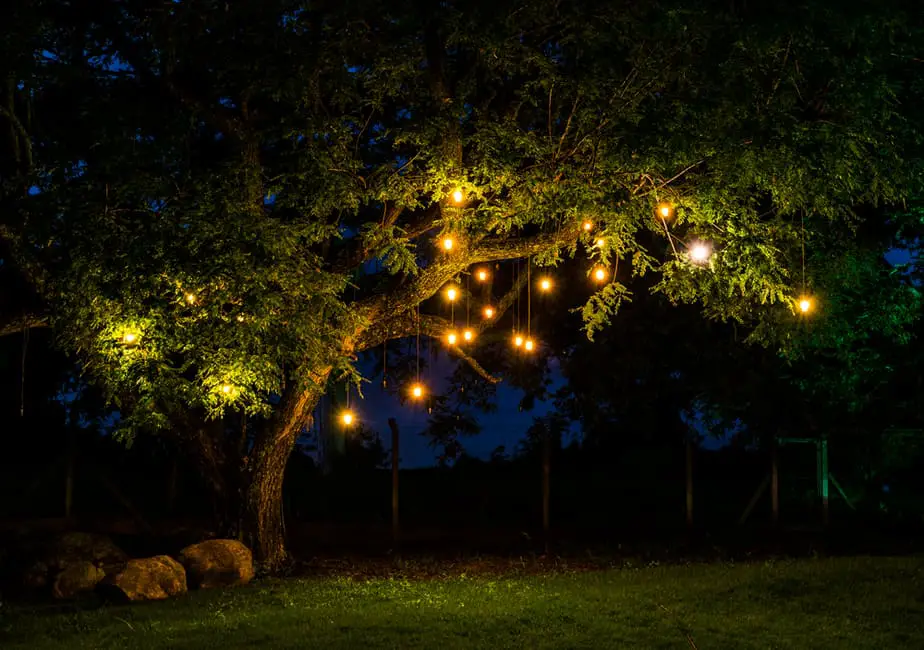
Good lighting will bring attention to areas you want to accentuate and give yourself an outdoor space that you can see and enjoy at any time of day. String lights look very good draped across the lower branches of a tree, especially above a table or bench.
Spotlights placed at the base of a tree and pointed upward will draw attention to the tree’s trunk and height. Path lights can be placed around the border of the mulch bed or among your plants to accentuate your garden. Overall, creative lighting will take your landscaping to the next level.
Final Thoughts
Landscaping around trees isn’t as difficult as it may seem. It’s important to take into consideration the needs of your trees. Try not to damage their roots or trunks as this can lead to your tree’s life being cut short. Establishing a mulch bed around the tree can keep the soil moist. As the mulch decays, it will release nutrients into your soil fertilizing your tree and anything else you’ve planted nearby.
Pick plants that will live happily under your trees and accent them with lighting and rocks. Be sure to make a space for yourself to enjoy the shade or your new garden, as well. Figuring out how to landscape around trees can be tricky, but keeping these principles in mind will help you plan accordingly.